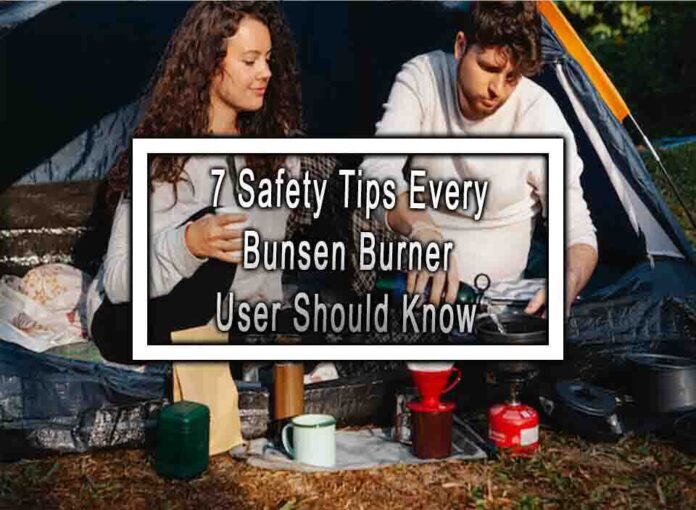Using a Bunsen burner safely is essential to prevent accidents and ensure a secure laboratory environment. Here are seven safety tips every Bunsen burner user should know:
Proper Setup and Inspection:
- Ensure that the Bunsen burner is securely attached to the gas source and the lab bench. Inspect the hoses, connections, and tubing for any signs of wear or damage before use. Always use the appropriate gas type for your burner (e.g., natural gas or propane).

Flame Ignition:
- When lighting the Bunsen burner, make sure the air hole is fully closed. Light a match or striker first, then slowly open the gas valve. Hold the lit match or striker near the burner’s top to ignite the gas. Once the flame is established, adjust the air hole to achieve the desired flame type (e.g., blue flame for hot flame, yellow flame for a cooler flame).
Proper Flame Control:
- Maintain control over the flame’s intensity using the gas valve and air hole adjustments. A well-adjusted flame will burn cleanly without producing soot or smoke. Keep the flame height at a safe and appropriate level for your experiment.
Prevent Flammable Substances:
- Clear the area around the Bunsen burner of any flammable materials, including paper, solvents, and chemicals. Keep loose clothing and long hair secured to prevent them from coming into contact with the flame.
Secure Equipment:
- Make sure that your equipment, such as beakers, flasks, or test tubes, is properly supported on a heat-resistant surface. Use appropriate clamps and stands to prevent accidents and spills.
Avoid Obstructing the Air Hole:
- Keep the air hole unobstructed to ensure proper air and gas mixture. Obstructing the air hole can lead to incomplete combustion, which may produce carbon monoxide and soot.
Supervision and Training:
- Bunsen burners should be used under the supervision of a knowledgeable instructor or experienced lab personnel, especially for students and beginners. Proper training in the use and safety protocols of Bunsen burners is essential.
Emergency Equipment:
- Keep a fire extinguisher, fire blanket, and a clear pathway to the lab’s emergency exit readily accessible. Know how to use them in case of an emergency.
Remember that each lab may have specific safety protocols and guidelines, so it’s important to follow the guidelines established by your institution. Adhering to proper safety practices when using a Bunsen burner ensures a safe working environment and minimizes the risk of accidents or injuries.











